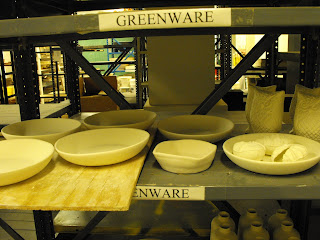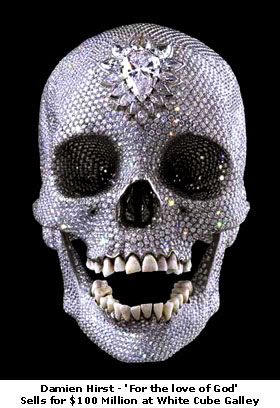






Growing Up -Amber R. Novack
In a tree that is central to the campus for art students, where it is surrounded by two art buildings and the library, is a series of insects and cocoons or chrysalises. These caterpillars are pre-cocoon, some cocoons are sealed, still going through the transformation and some have already torn through and left, transformed. We all go through a transformation from childhood to adulthood in life; some slowly and some much more quickly than others. Some of us leave parts of our childhood behind when we grow up, and some of us take much of it with us. Some of us also have items that we may see long after growing up that bring us back to a time of childhood. These insects have done this in a place where all ages of college students pass, both the young new freshmen and the experienced master's students. Trees represent life in various cultures, as this tree holds children at different stages of transformation.
Food for Thought -Amber R. Novack
Around the world, societies have different staples for food in their basic diets. The norm for American society as a whole in fast food chains is hamburgers, or beef, derived from cows. Many people would not blink at this food source, but in India, cows are sacred, and to even think of eating such a thing is horrific. Insects are also a staple food in many societies in Africa, Asia, Middle and South America. To even think of eating bugs in Western European and American societies is unthinkable. Why do some foods transcend culture, but others do not? What associations are given to certain creatures that humans obtain nourishment from? Depending on the background of the viewer, the associations of one animal for food and an insect for food may be very different, or actually the same.
Untitled (Gaelic and American Idiom Bowls) -Amber R. Novack
There are phrases used everyday by people of various cultures to describe different situations in not so many words, which we call idioms. Growing up with Irish culture being a big part of my background, I recognize many Irish and American idioms. People who are not a part of a certain cultures would not recognize or relate to certain phrases, while others who are a part of that culture will. Included are three phrases I heard growing up both from Irish culture in Gaelic and from American culture in English, brought together on bowls.
(Photos to follow critiques on pieces so they may be photographed in their intended display setting.)


 I'm happy to say that none of my cocoons or caterpillars blew up! They have all been bisque fired, and are now ready to be glazed. I just hope that there are enough stilts for me to use, because I want to dip these guys in glaze.
I'm happy to say that none of my cocoons or caterpillars blew up! They have all been bisque fired, and are now ready to be glazed. I just hope that there are enough stilts for me to use, because I want to dip these guys in glaze. Slip cast bowls and a couple bugs ready to be bisque fired. Those are Judi's awesome owls on the right!
Slip cast bowls and a couple bugs ready to be bisque fired. Those are Judi's awesome owls on the right! Project 3: thrown on the wheel. I made a series of variously sized bowls which each have a saying on them from either American culture in English or Irish culture in Gaelic. Goin' back to my roots. :)
Project 3: thrown on the wheel. I made a series of variously sized bowls which each have a saying on them from either American culture in English or Irish culture in Gaelic. Goin' back to my roots. :) There's some more thrown bowls.
There's some more thrown bowls.
In response to today’s articles and discussions, I found the idea of margins in relation to our courses here at New Paltz an interesting idea. Especially to this course, we have margins or slight guidelines in ceramics to provide a jumping point for work, but at the same time each assignment is outlined in a vague way to help provide slight margins so that each assignment isn’t too vague. Personally, I feel the need for freedom for exploration in my own work as a graduate student, but at the same time I can appreciate a challenge or problem to address in each assignment so that it isn’t too vague for me to come up with a concept to explore on the fly.
On another note, I really enjoyed John Byrd’s piece “Simple Anatomy, Slow Burn”. It was really interesting, and I really appreciate work that shows mastery of a skill or medium but at the same time is able to combine other mediums or materials to create a cohesive piece. I especially enjoyed the connection to nature Byrd presents in this piece, as I enjoy having a connection to or reference to nature in many of my own work.
Also, in reference to the altermodernism article; I really enjoy the thought and concept of a ‘nomadic artist’. Being myself one who uses a variety of mediums for each of my works, I don’t really feel comfortable saying I am just an illustrator, sculptor, etc. I feel that I could really embrace the notion of being a nomadic artist. Having never heard that term before, I think I would like to learn more about this term and notion.
 This was a starting point for my caterpillars. The hole at the ends of these objects was meant for hanging. This starting point reminded me of a solid, fat sausage! But after some time, it began to take shape. Once I liked how it basically looked, I took my fettling knife and did a little dissection by slicing the backs open, then using a wire tool to scoop out all of the 'innards'. Lastly, sealing it up smoothly for a nice, hollow piece that wasn't too heavy. Holes were punctured for air release.
This was a starting point for my caterpillars. The hole at the ends of these objects was meant for hanging. This starting point reminded me of a solid, fat sausage! But after some time, it began to take shape. Once I liked how it basically looked, I took my fettling knife and did a little dissection by slicing the backs open, then using a wire tool to scoop out all of the 'innards'. Lastly, sealing it up smoothly for a nice, hollow piece that wasn't too heavy. Holes were punctured for air release. I really like how smooth they are. They are in position to begin making their cocoons, which I also made. I love how infantile and fragile they feel in my hands, even though they are multiple times their original size.
I really like how smooth they are. They are in position to begin making their cocoons, which I also made. I love how infantile and fragile they feel in my hands, even though they are multiple times their original size. These are the ones I've made so far. Some of them are leather hard, some are still very wet. Some of the cocoons are sealed (like the form on the inside hasn't matured yet) and some have begun to open and reveal the mature form inside.
These are the ones I've made so far. Some of them are leather hard, some are still very wet. Some of the cocoons are sealed (like the form on the inside hasn't matured yet) and some have begun to open and reveal the mature form inside. This is a close up of one of the cocoons. I plan to have them all glazed in opaque pale color (off white or grayish, I'm not sure yet). I just want them to be plain to start. Coming out of the opened cocoons I want to have unexpected things coming out of them. That I want to be a surprise, so I wont tell you what yet. :)
This is a close up of one of the cocoons. I plan to have them all glazed in opaque pale color (off white or grayish, I'm not sure yet). I just want them to be plain to start. Coming out of the opened cocoons I want to have unexpected things coming out of them. That I want to be a surprise, so I wont tell you what yet. :) This is a tree I was thinking of using for the site. Hanging from various heights, I wanted it to be something you might happen upon and be surprised to see. I was thinking about the expected and unexpected in evolution and transformation. We always expect the same thing to come out of a cocoon, just like some parents expect their child to grow up to be a picture they have in their mind of someone they would want to associate with or wished they could be. Often, as we know, we do not grow up as our parents thought. I want my piece to voice that unexpected surprise, where you think you are going to see something and then see something completely different, whether it be a good or bad surprise. Expect the unexpected. I love those kind of surprises.
This is a tree I was thinking of using for the site. Hanging from various heights, I wanted it to be something you might happen upon and be surprised to see. I was thinking about the expected and unexpected in evolution and transformation. We always expect the same thing to come out of a cocoon, just like some parents expect their child to grow up to be a picture they have in their mind of someone they would want to associate with or wished they could be. Often, as we know, we do not grow up as our parents thought. I want my piece to voice that unexpected surprise, where you think you are going to see something and then see something completely different, whether it be a good or bad surprise. Expect the unexpected. I love those kind of surprises. In other news, here are some test tiles! (Mine and Karen's are on the same board.) Jen, Karen and I all made slip this morning (after some drill bit difficulties) and feel that it came out great! The slip felt WONDERFUL on your fingers. So silky! :)
In other news, here are some test tiles! (Mine and Karen's are on the same board.) Jen, Karen and I all made slip this morning (after some drill bit difficulties) and feel that it came out great! The slip felt WONDERFUL on your fingers. So silky! :)
 (made by Bond Street firm Bentley and Skinner)
(made by Bond Street firm Bentley and Skinner)
 Roni Horn's "Pink Tons"
Roni Horn's "Pink Tons"
 The author states:
The author states:
